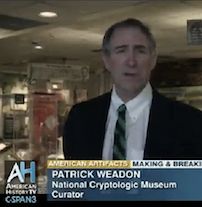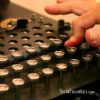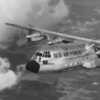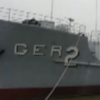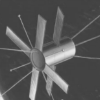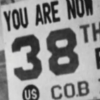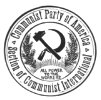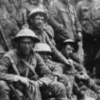Museum and Exhibit-Related Videos
-
What exactly goes on behind the scenes at the National Cryptologic Museum? What do visitors see and learn when they arrive at the museum? How are artifacts selected for display? What resources are available at the library? Watch this for a peek into the history of cryptology!
-
Patricia Villone of Prince George's County Community TV explores the National Cryptologic Museum as part of her 2017 Summer Museum Series. Check out this short, yet informative sneak peek into the NCM and some of its most popular exhibits.
-
Patrick Weadon, curator at the National Cryptologic Museum, spoke about the making and breaking of secret codes and the role of cryptology in U.S. history and U.S. intelligence activities in this special feature for American History TV/C-Span3.
-
Owned and operated by the National Security Agency this museum is located in Fort Meade, MD and is only a short drive from either Baltimore or Washington, DC.
-
Using the Enigma and the Sigaba, world powers encrypted their messages in hopes of catching their opponents by surprise.
-
On September 2, 1958, a USAF C-130 reconnaissance aircraft was shot down by Soviet MiG-17 pilots. While conducting its mission, the US craft strayed into restricted airspace over Soviet Armenia. Why did the C-130 cross into Armenian space?
-
The USS Pueblo, under Commander Lloyd M. Bucher, was captured by North Korea in 1968, the first U.S. Navy ship hi-jacked by a foreign military force in more than 150 years. The details of the capture of the Banner-class technical research ship (Navy intelligence) remain murky even to this day.
-
Purple was the code name Americans gave an Imperial Japanese Navy diplomatic cipher that was used to send messages to important diplomatic offices around the world.
-
Battlefield communications took a dramatic leap forward during the American Civil War when Union and Confederate signal organizations were organized and deployed. Both armies utilized flag waving techniques known as "wig-wagging" to convey vital messages in binary code.
-
POPPY was the successor to the Nation's first electronic intelligence satellite, known as GRAB ("Galactic Radiation and Background," its cover, or codename TATTLETALE), also on display at the Museum.
-
Little did anyone know in the spring of 1950 that when North Korea invaded South Korea a conflict would start that would never fully resolve. American intelligence analysts, on the scene along with American troops, studied Chinese communications. Their conclusion was that sooner or later Asia's giant would leap into the war, too.
-
In the spring of 1942, Japanese intercepts began to make references to a pending operation at a place designated as "AF." The Americans believed "AF" might be Midway. Based on the information available, logic dictated that Midway would be the most probable place for the Japanese Navy to make its next move.
-
Comanche, Sioux and Choctaw warriors were legendary in the United States for their ferocity and bravery. But in World Wars I and II they gave Europeans a taste of what a difficult enemy they could be. Learn more about the Native American Code Talkers.
-
Even before World War II ended, the United States identified a need to look into the messages of its ally, soon-to-be enemy, the Soviet Union. And a program called Venona was established.
-
A single Western Union telegram, composed and sent in code from German Foreign Minister Arthur Zimmermann to the government of Mexico was intercepted and deciphered by British cryptographers. The contents outraged Americans and changed the national mood from peace to war.




